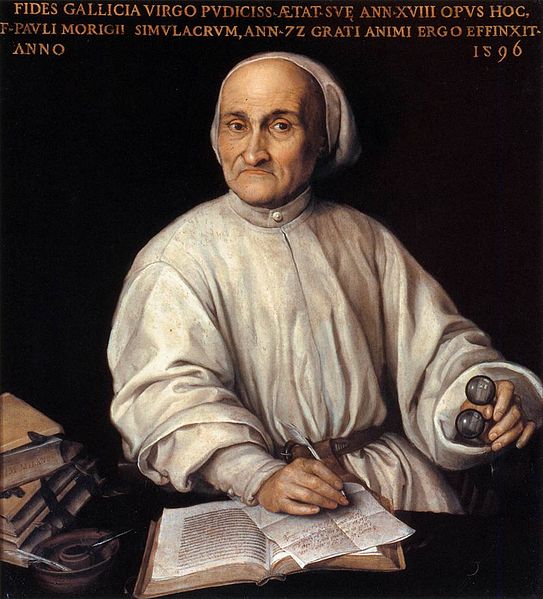Fede Galizia, better known as Galizia, was an Italian painter of still-lifes, portraits, and religious pictures. She is especially noted as a painter of still-lifes of fruit, a genre in which she was one of the earliest practitioners in European art. She is perhaps not as well known as other female artists, such as Angelica Kauffman and Élisabeth Vigée Le Brun, because she did not have access to court-oriented or aristocratic social circles, nor had she sought the particular patronage of political rulers and noblemen.
Judith with the Head of Holofernes (1596). The figure of Judith is believed to be a self-portrait.
Fede Galizia White Ceramic Bowl with Peaches and Red and Blue Plums
Portrait of Paolo Morigia (1592–1596)
Close-up of reflection in the glass lenses of Portrait of Paolo Morigia (1596)
A still life is a work of art depicting mostly inanimate subject matter, typically commonplace objects which are either natural or human-made.
Juan Sánchez Cotán, Still Life with Game Fowl, Vegetables and Fruits (1602), Museo del Prado, Madrid
Still life on a 2nd-century mosaic, with fish, poultry, dates and vegetables from the Vatican museum
Glass bowl of fruit and vases. Roman wall painting in Pompeii (around 70 AD), Naples National Archaeological Museum, Naples, Italy
Hans Memling (1430–1494), Vase of Flowers (1480), Museo Thyssen-Bornemisza, Madrid. According to some scholars the Vase of Flowers is filled with religious symbolism.








